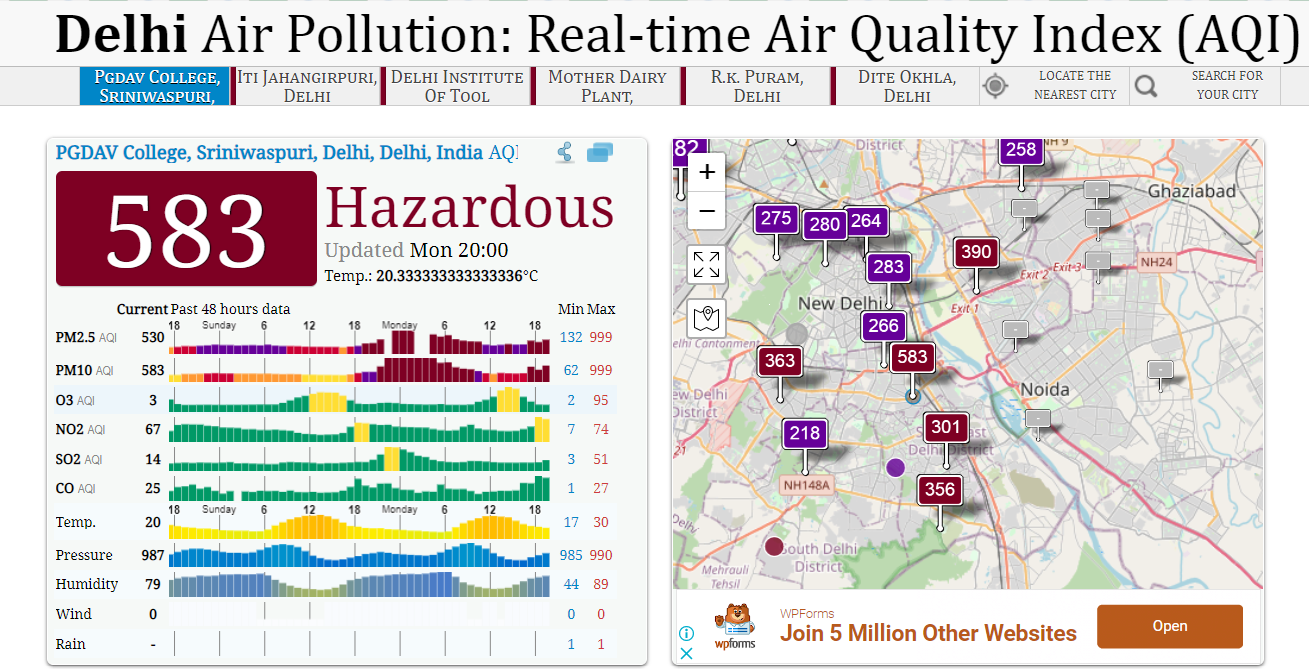Pollution Politics in Delhi. Delhi stands amidst the pantheon of the most contaminated metropolises globally, especially during the winter season, when the air quality index (AQI) escalates to perilous heights. The primary contributors to atmospheric contamination in Delhi encompass vehicular discharges, industrial emanations, suspended particulate matter from construction activities, incineration of waste, and the incendiary act of stubble burning in the adjacent states of Punjab, Haryana, Uttar Pradesh, and Rajasthan. Pollution Politics in Delhi.
Pollution Politics in Delhi
Airborne pollution takes a severe toll on the well-being of Delhi’s denizens, particularly among the younger populace who grapple with afflictions such as respiratory diseases, asthma, allergic reactions, and diminished life expectancy.
A complex saga unfolds between the Union government and the Delhi state government, with both entities entangled in a discordant blame game over the predicament of air pollution. Accusations of inactivity, neglect, and the issue being politically weaponized reverberate between the two. Pollution Politics in Delhi.
An ordinance from the Union government has been instituted to proscribe stubble burning, accompanied by imposing hefty penalties on transgressors. Nevertheless, the agrarian community resists compliance, citing the absence of viable alternatives and incentives.
Pollution Politics in Delhi
The Delhi administration has initiated several countermeasures to alleviate air pollution, encompassing an outright prohibition on pyrotechnics, a temporary moratorium on construction activities, the enforcement of the odd-even vehicle circulation scheme, and a fervent call to embrace telecommuting and ride-sharing. Pollution Politics in Delhi.
Additionally, the Delhi administration asserts that the Union government has not furnished adequate funds and assistance for the execution of the National Clean Air Programme (NCAP), which aspires to diminish the concentration of particulate matter (PM) by 20-30%.

- photo credit -https://aqicn.org/city/delhi
- Opinion Polls for 5 States elections 2023
A vociferous plea from the Delhi government implores the Union government to intercede and orchestrate a cooperative effort with the neighboring states to curb stubble burning and proffer alternative solutions to the farming community. Pollution Politics in Delhi.
Pollution Politics in Delhi
The imbroglio of air pollution in Delhi metamorphoses into a political arena where divergent factions vie for public allegiance and compassion, deploying blame and the victimization card as strategic weapons.
Navigating the labyrinthine challenge of air pollution in Delhi mandates an inclusive and synergistic approach. The nexus involves the Union government, the Delhi government, the adjoining states, the agrarian community, the industrial sector, the civil society, and the citizenry, converging to devise sustainable and efficacious remedies.
In this complex quagmire of environmental degradation, the discourse extends beyond mere political wrangling. An intricate tapestry of interconnected factors weaves itself into the very fabric of the problem, demanding nuanced solutions and shared responsibility. Pollution Politics in Delhi.
The Union government’s promulgation of ordinances and stringent penalties portrays a commitment to combating the menace of stubble burning. However, the agrarian community’s defiance reveals a deeper systemic issue, necessitating a more empathetic understanding of their challenges and viable alternatives.
Delhi’s regulatory actions, from firecracker bans to vehicle circulation schemes, reflect a localized attempt to curb pollution. Nevertheless, the tug-of-war with the Union government over funds for the National Clean Air Programme underscores the need for a united front against this pervasive issue. Pollution Politics in Delhi.
Pollution Politics in Delhi
The call for intergovernmental cooperation to quell stubble burning underscores the regional scope of the problem. Bridging the divide between Delhi and its neighboring states requires a diplomatic and collaborative approach to implement lasting changes.
As the political theater unfolds, the citizens find themselves caught in the crossfire of blame and counter-blame. The urgency of the matter demands a collective voice from civil society, pushing for concrete action rather than political posturing. Pollution Politics in Delhi.
Ultimately, the challenge of air pollution in Delhi is a call to arms for comprehensive reforms. It transcends political affiliations and necessitates a collective will to adopt sustainable practices, invest in alternative technologies, and foster a culture of environmental responsibility.
Pollution Politics in Delhi
In conclusion, the quagmire of air pollution in Delhi necessitates a paradigm shift in governance, public awareness, and industrial practices. As the stakeholders grapple with this complex issue, the onus is on society at large to demand, support, and actively participate in the pursuit of a cleaner, healthier future. Pollution Politics in Delhi.